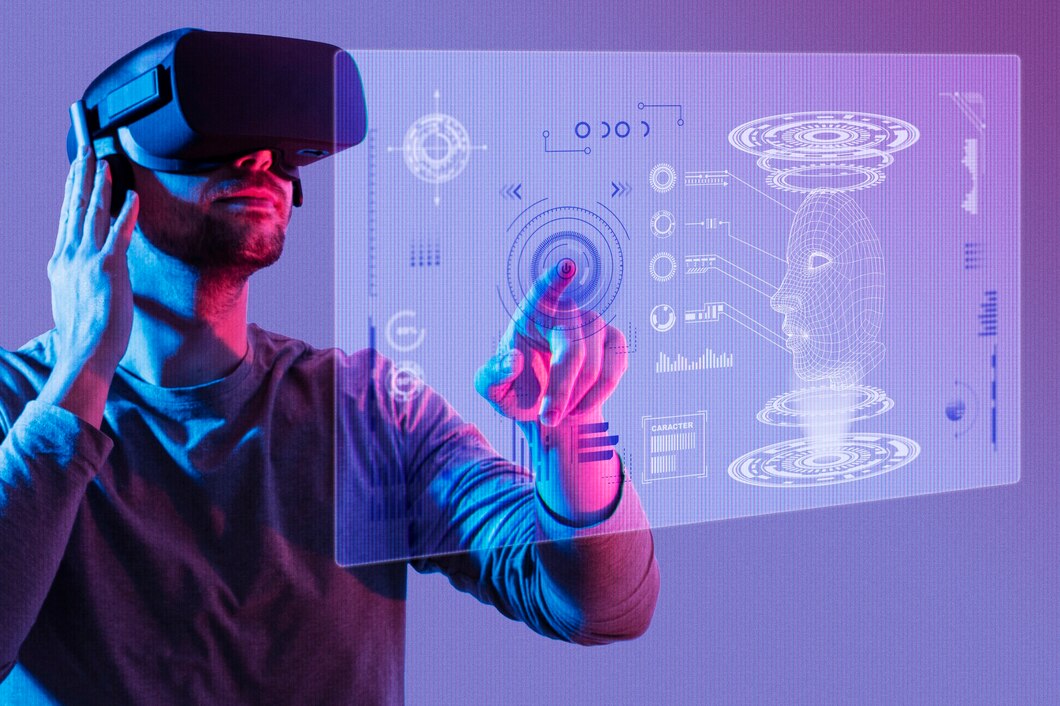Virtual Reality (VR) and Augmented Reality (AR) are transforming the way we interact with the digital world. Once seen as futuristic technologies limited to gaming, they have now expanded into various industries, offering immersive and interactive experiences that blend the real and virtual worlds. From healthcare to education, their applications are vast and rapidly evolving. Let’s explore some of the most diverse and impactful uses of VR and AR today.
1. Education and Training
VR and AR are revolutionizing the education sector by providing students with interactive and experiential learning environments.
-
Virtual Reality classrooms let students explore historical sites, space, or biological systems in 3D without leaving their desks.
-
AR applications overlay digital content—like chemical structures or anatomy diagrams—onto physical textbooks, making complex subjects easier to grasp.
-
In professional training, pilots, surgeons, and military personnel use VR simulations to practice high-risk scenarios safely.
2. Healthcare and Medical Applications
In healthcare, VR and AR are being used to improve both patient outcomes and medical training.
-
VR surgery simulations help doctors practice procedures without risk.
-
AR-guided surgery assists surgeons with real-time data, showing organ structures or incision points over the patient’s body.
-
VR is also being used in pain management and mental health therapy, such as treating phobias, PTSD, and anxiety through immersive experiences.
3. Gaming and Entertainment
This is where VR and AR first gained mainstream attention.
-
VR gaming allows players to immerse themselves in realistic environments and interact with them in real time.
-
AR gaming, popularized by games like Pokémon GO, integrates digital elements into real-world surroundings, creating an engaging blend of virtual and physical play.
Beyond gaming, VR concerts and AR-enhanced movies are redefining entertainment experiences.
4. Retail and E-commerce
AR and VR are changing the way people shop.
-
Virtual fitting rooms allow users to “try on” clothes or accessories through AR apps.
-
VR showrooms give customers the experience of walking through a store or viewing a product in 3D from home.
-
Furniture retailers like IKEA use AR to let customers visualize how products would look in their living space.
5. Real Estate and Architecture
VR and AR have made property exploration more convenient and realistic.
-
Virtual property tours let potential buyers explore houses remotely.
-
AR visualization tools help architects and clients see how buildings or interior designs will appear before construction begins.
This reduces design errors and helps make more informed decisions.
6. Manufacturing and Industry
In industrial settings, VR and AR are being used for design, maintenance, and safety.
-
Engineers use VR simulations to visualize prototypes before manufacturing.
-
AR headsets assist workers by displaying step-by-step instructions or highlighting problem areas on machinery.
This enhances efficiency, reduces downtime, and improves safety compliance.
7. Tourism and Travel
Both technologies have added a new dimension to travel experiences.
-
Virtual tours allow travelers to explore destinations before booking trips.
-
AR travel guides provide real-time information about landmarks, directions, and cultural insights during tours.
This creates more engaging and informative travel experiences.
8. Sports and Fitness
VR and AR are changing the way athletes train and fans engage with sports.
-
VR simulations help athletes practice in realistic conditions without physical strain.
-
AR-enhanced broadcasts offer viewers live stats, replays, and immersive experiences.
-
Fitness apps like Supernatural use VR to make workouts fun and interactive.
9. Military and Defense
The military uses VR and AR for training, strategy, and maintenance.
-
VR combat simulations train soldiers for complex missions in safe, controlled environments.
-
AR helmets display tactical information and maps in real time during operations.
These technologies enhance both preparedness and situational awareness.
10. Marketing and Advertising
Brands use AR and VR to create memorable marketing experiences.
-
AR filters on social media platforms let users engage directly with products.
-
VR brand experiences allow customers to immerse themselves in a story or campaign, creating emotional connections and brand loyalty.
Conclusion
The uses of Virtual Reality and Augmented Reality go far beyond entertainment—they’re reshaping industries, improving education, enhancing safety, and transforming how we live and work. As technology advances and devices become more affordable, VR and AR will become even more integrated into everyday life, offering limitless possibilities for creativity, innovation, and human connection.

